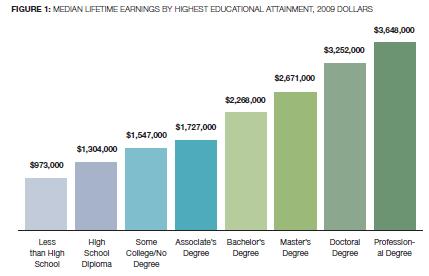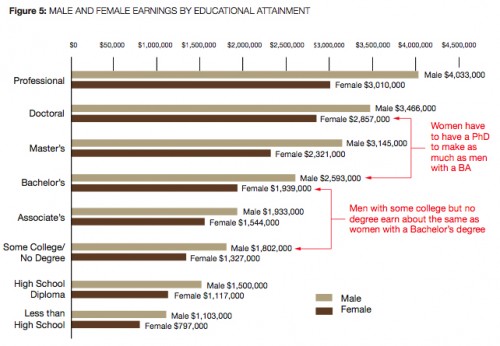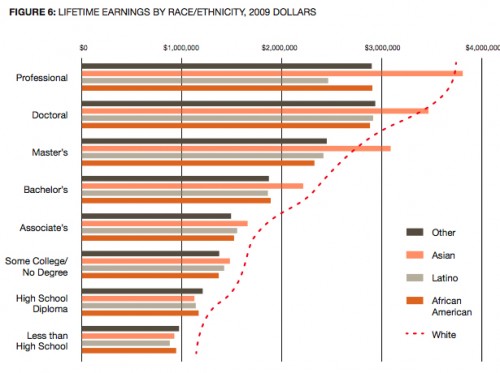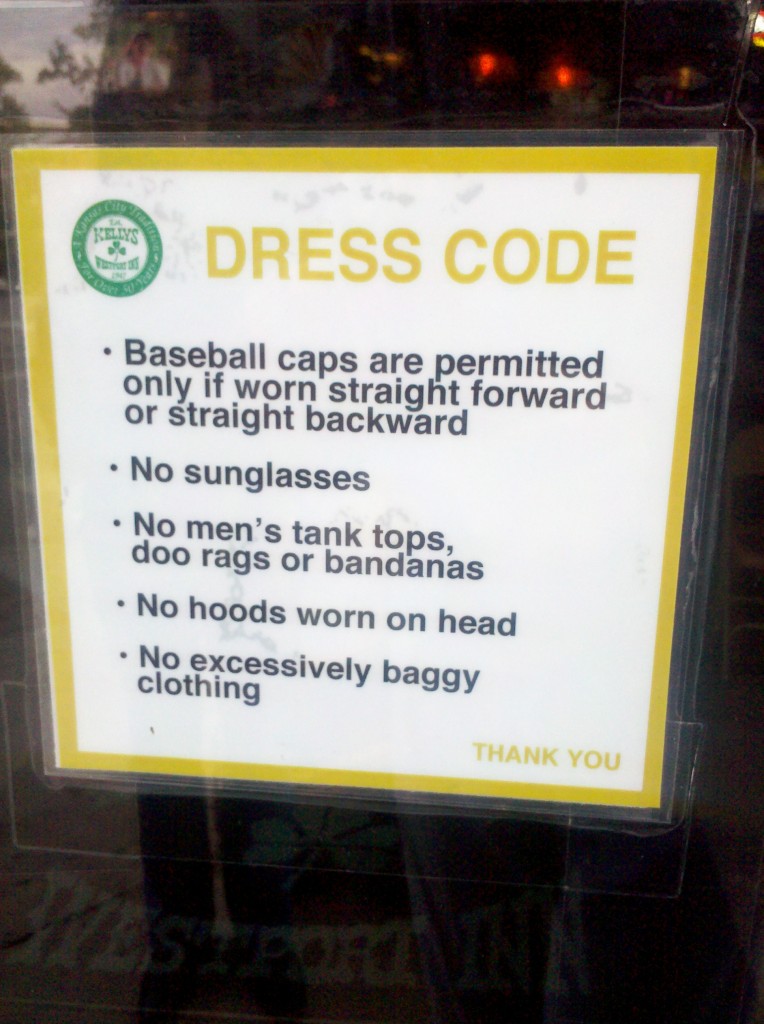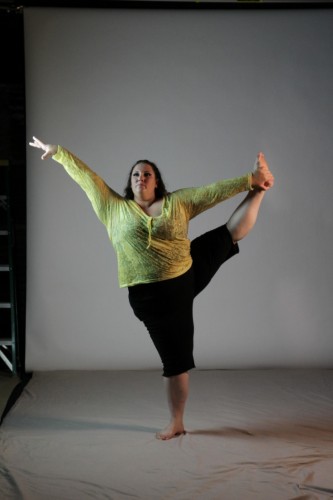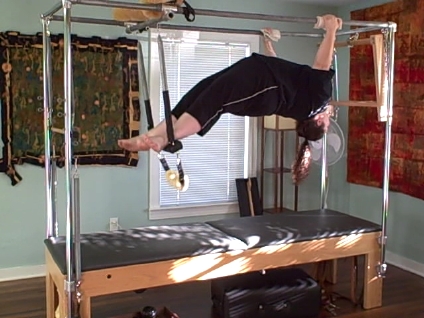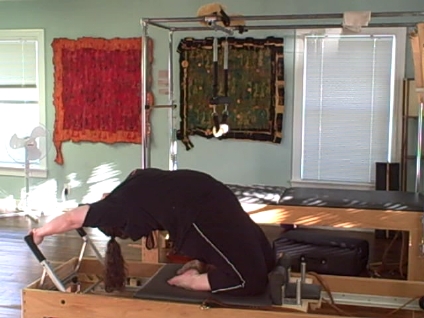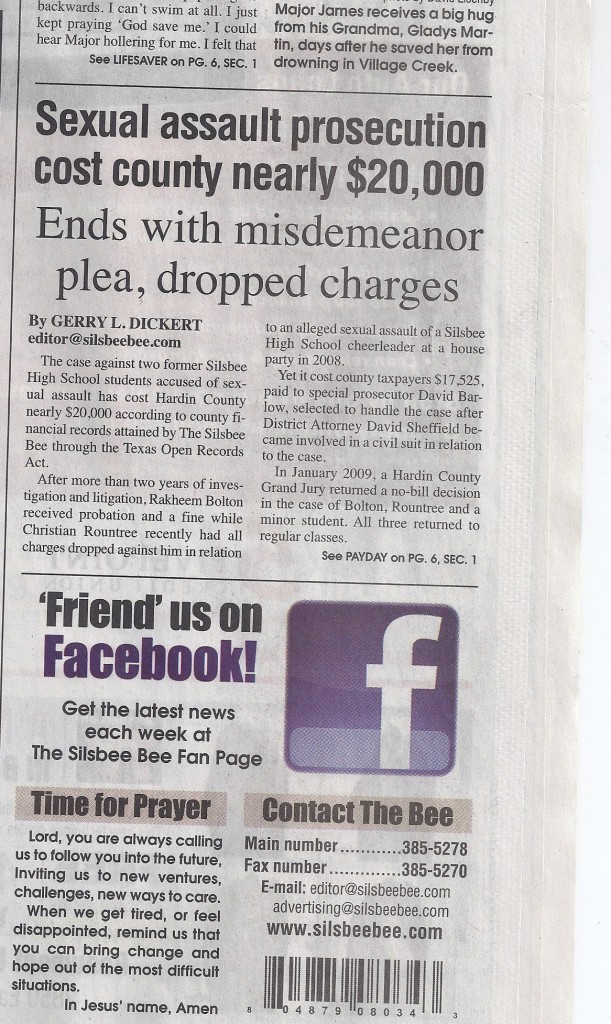Cross-posted at Scientopia, Ms., and Jezebel.
Dolores R. and Andrew S. let us know about the report “The College Payoff: Education, Occupations, Lifetime Earnings,” by researchers at Georgetown University’s Center on Education and the Workforce, based on 2007-2009 American Community Survey data (via Feministing and Kay Steiger). Not surprisingly, higher education significantly increases lifetime earnings of U.S. workers:
But education doesn’t pay off equally for all groups. Women, not surprisingly, make less at every level of education than men do; in fact, their median lifetime earnings are generally on par with men a couple of rungs down the educational ladder:
Ah, but, you might think, women are more likely to take time out of the workforce than men, so perhaps that accounts for the difference. But the gaps calculated here are only for full-time, year-round workers and do not include periods out of the workforce — that is, this is the “best-case scenario” in terms of comparing gender earnings, and yet women still make about 25% less than men at the same educational level. When they include workers taking time out of the workforce, the pay gap would be significantly larger. The far right column in this table shows how much less women make compared to men based on the “typical” work pattern for workers in each educational category:
The benefits of education also vary by race and ethnicity, with non-Hispanic Whites generally making more at each educational level than all other groups, though Asians outearn them at the highest levels:
Though the authors don’t include a table showing the gap if you include workers who do not work full-time year-round throughout their careers, they state that as with gender, the gap widens significantly, since non-Whites are more likely to experience periods without work.
So does education pay? Undoubtedly, for all groups. But due to factors such as occupational segregation (especially by gender) and discrimination in the workplace, the return on an educational investment is clearly a lot higher for some than others.
Also see our recent posts on the gender gap in science and tech jobs, racial differences in job loss during the recession, unemployment among Black and White college grads, and trends in job segregation by sex.

